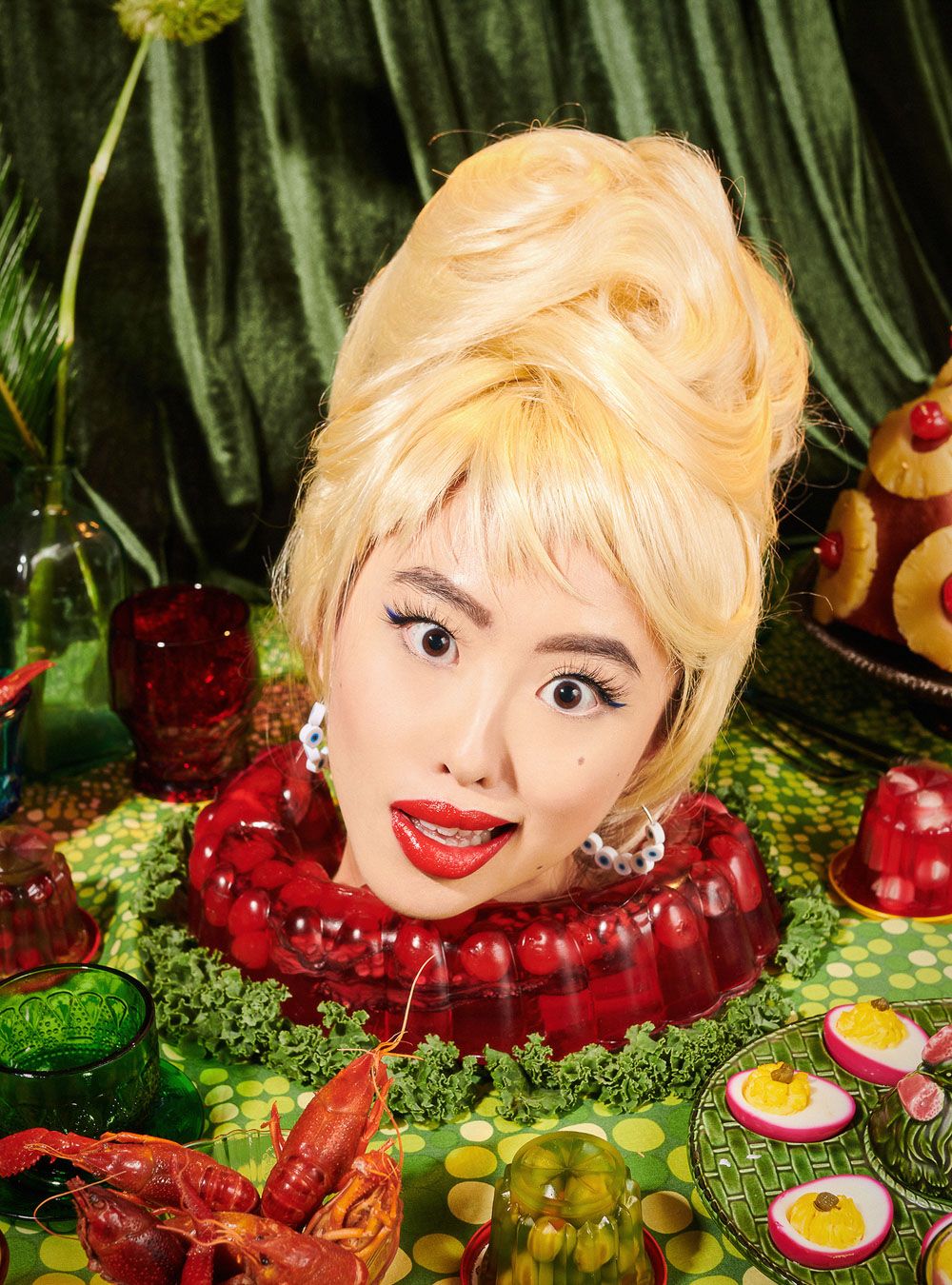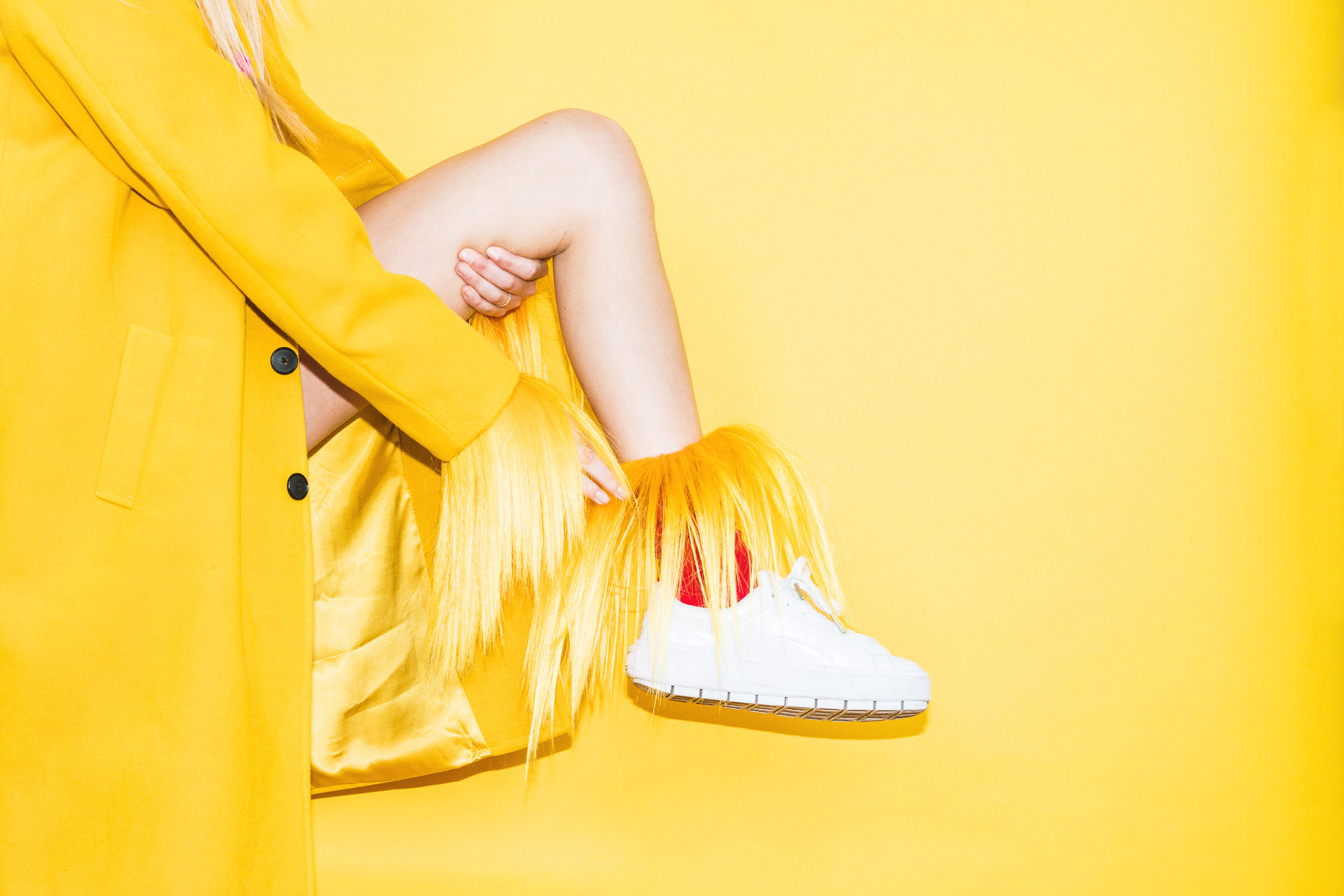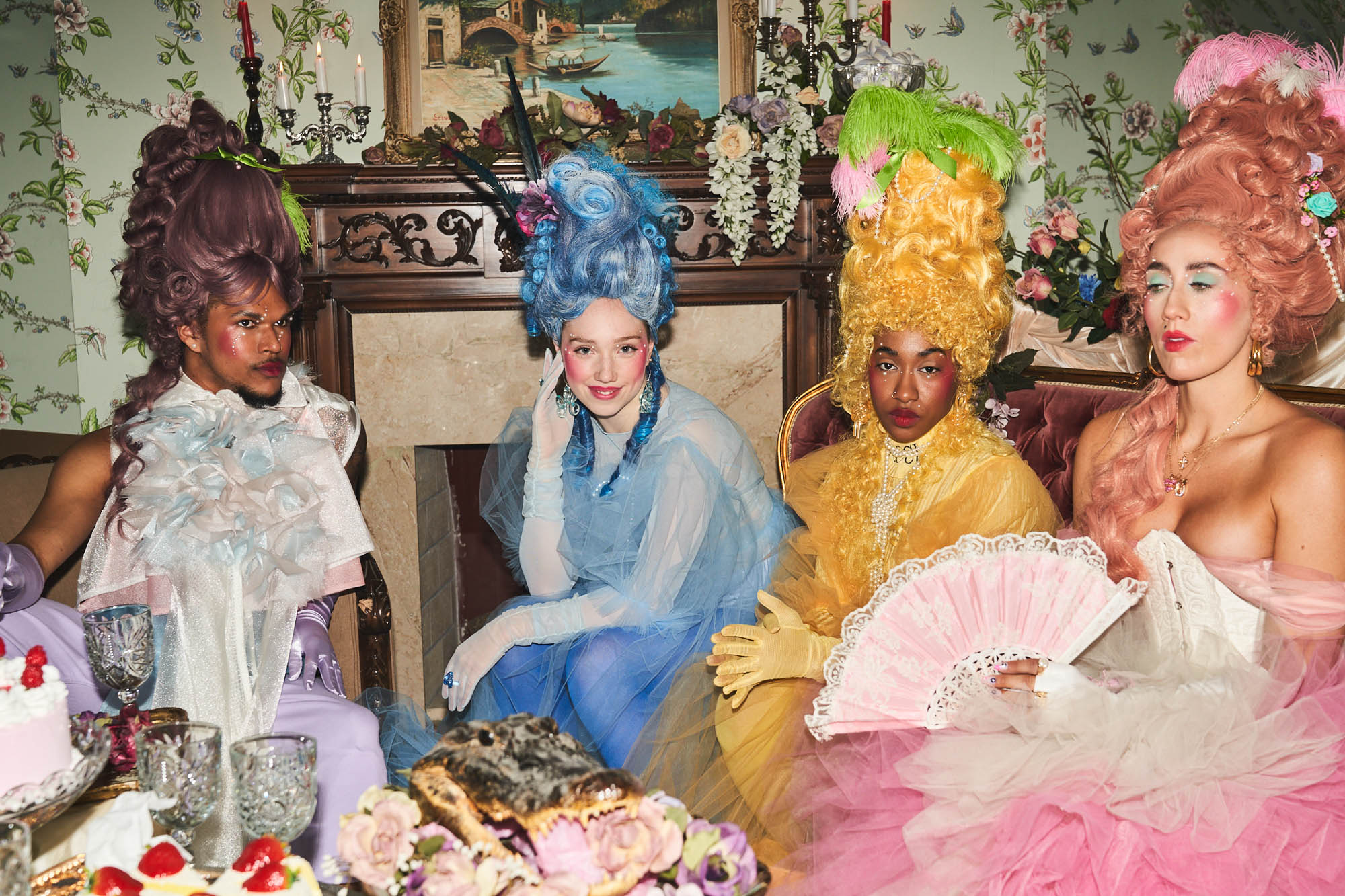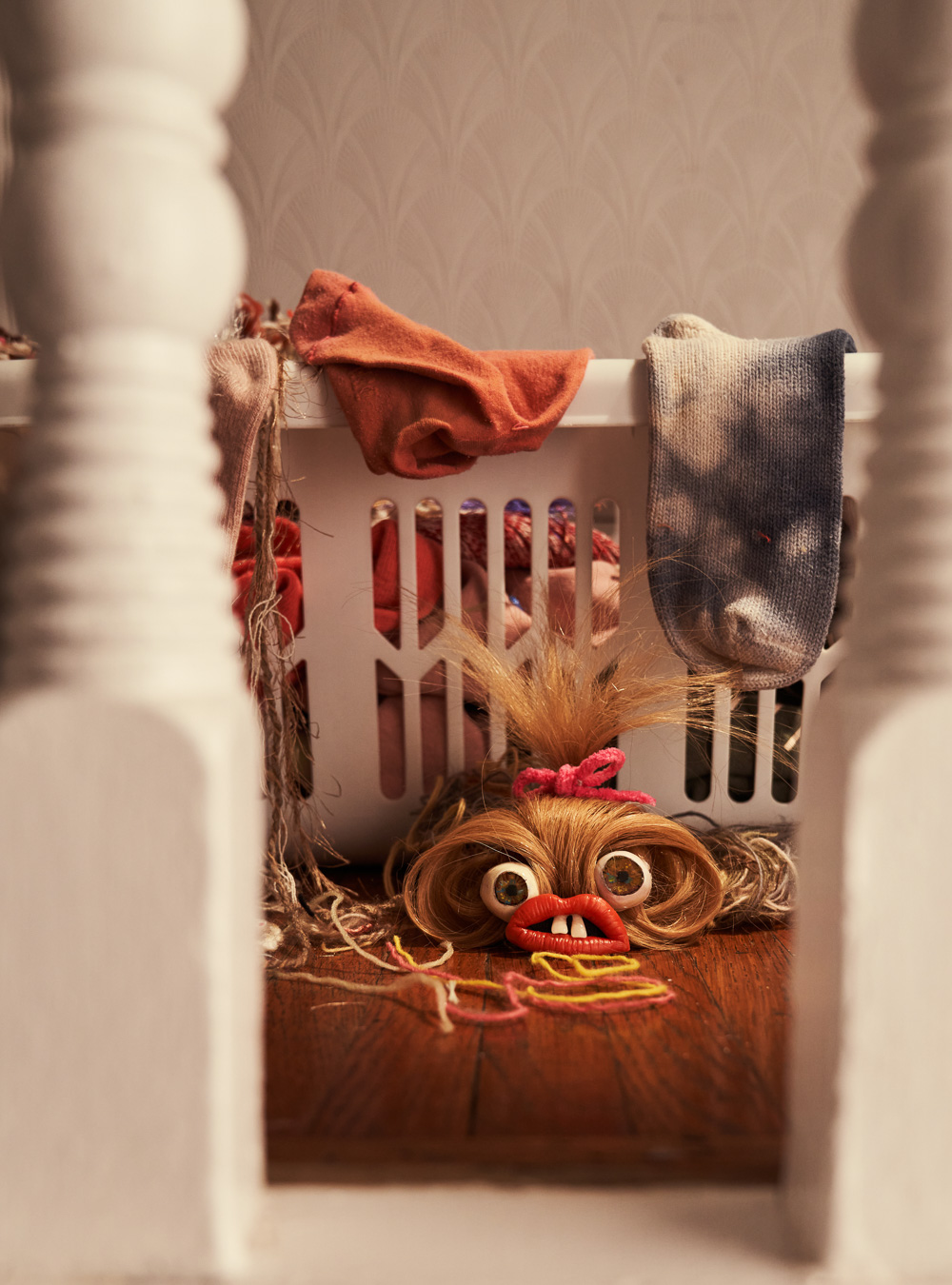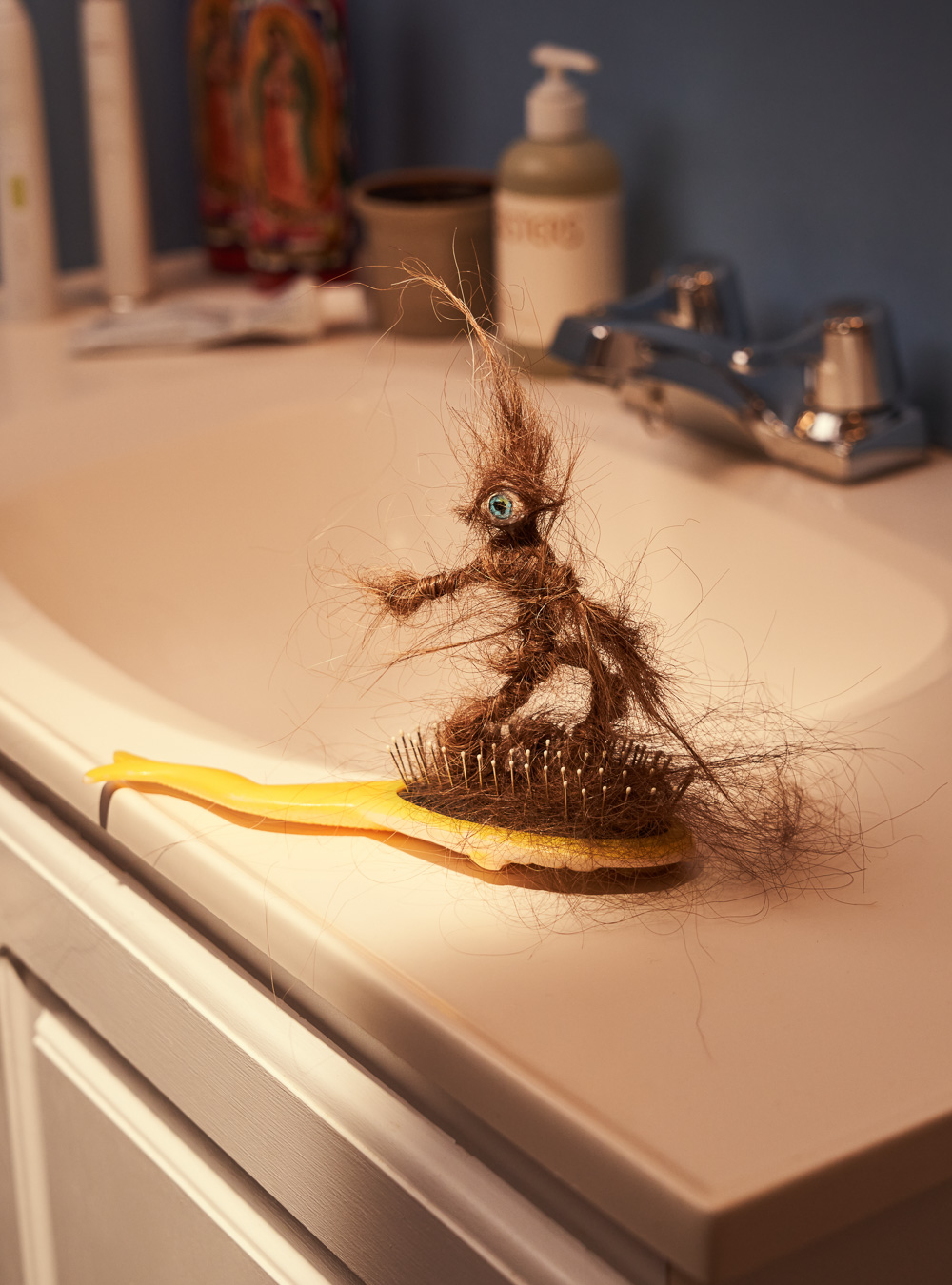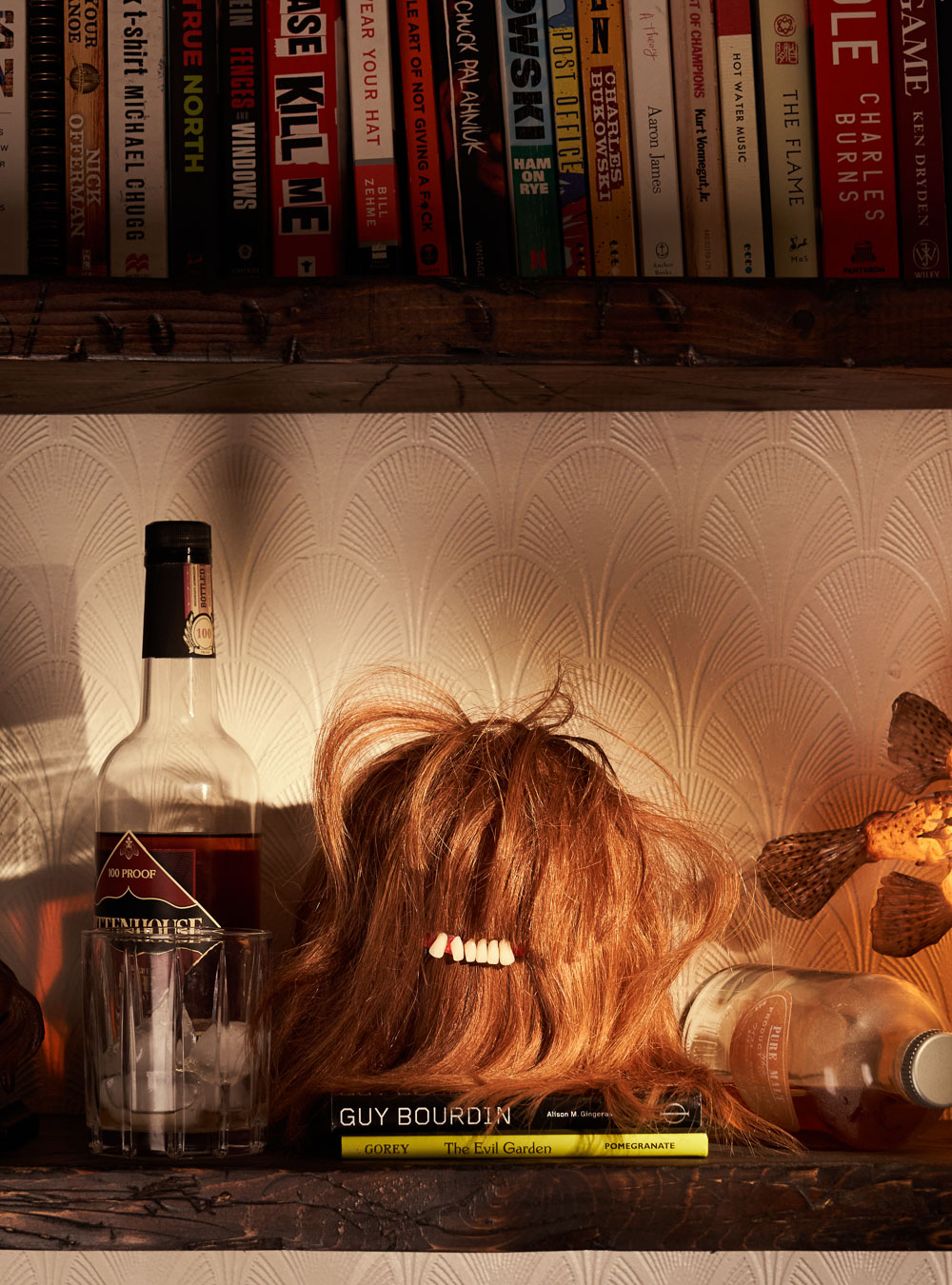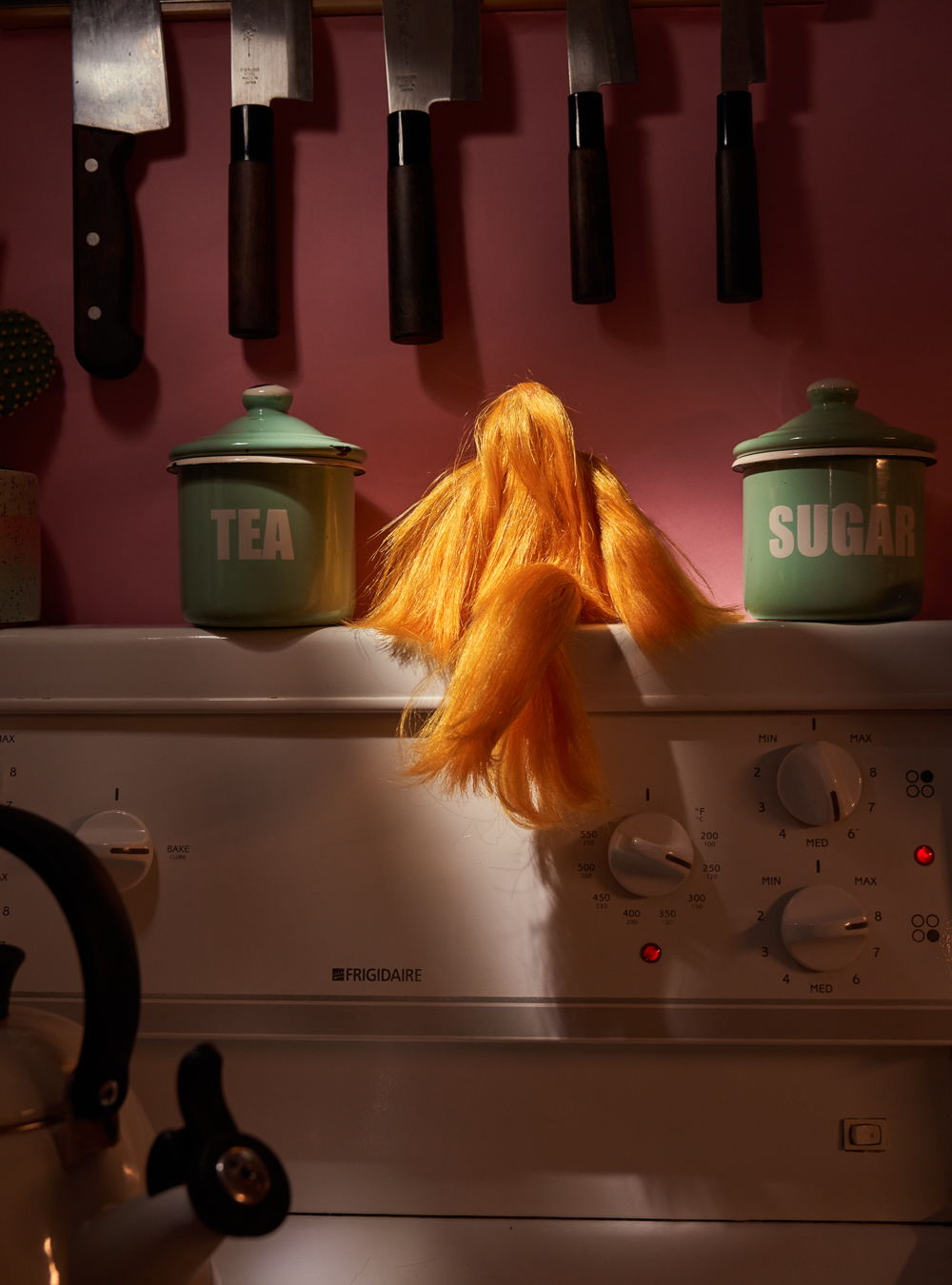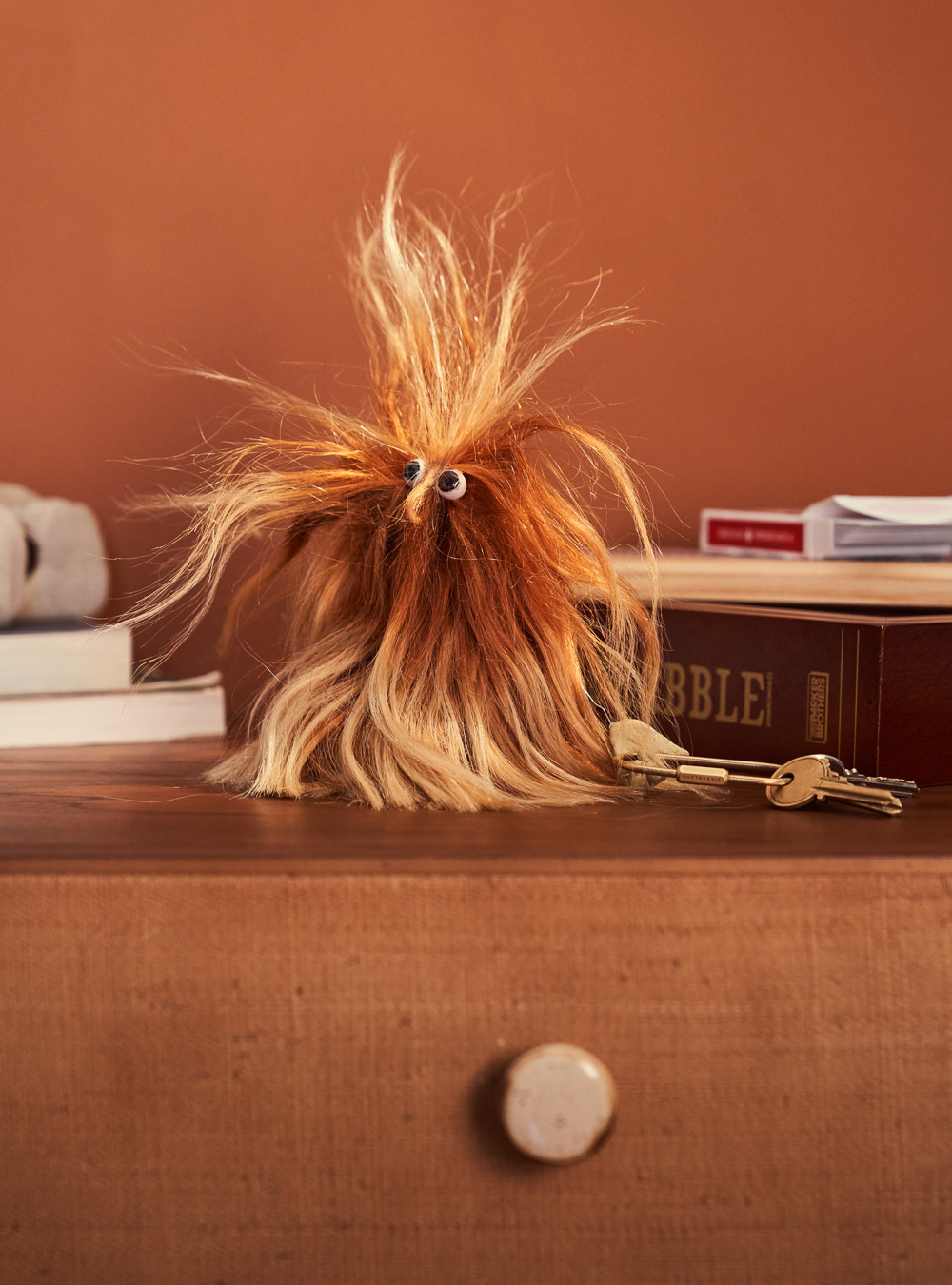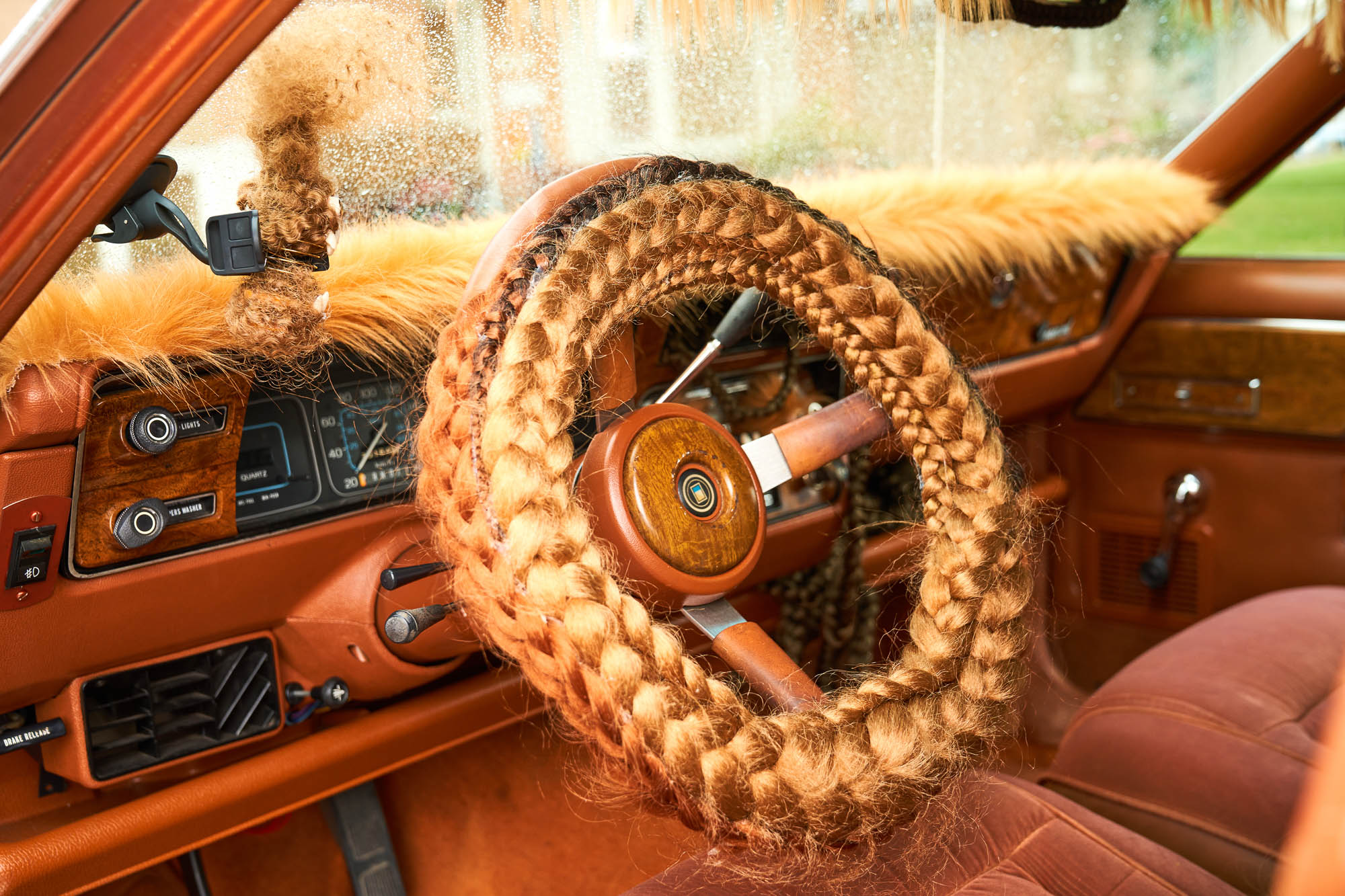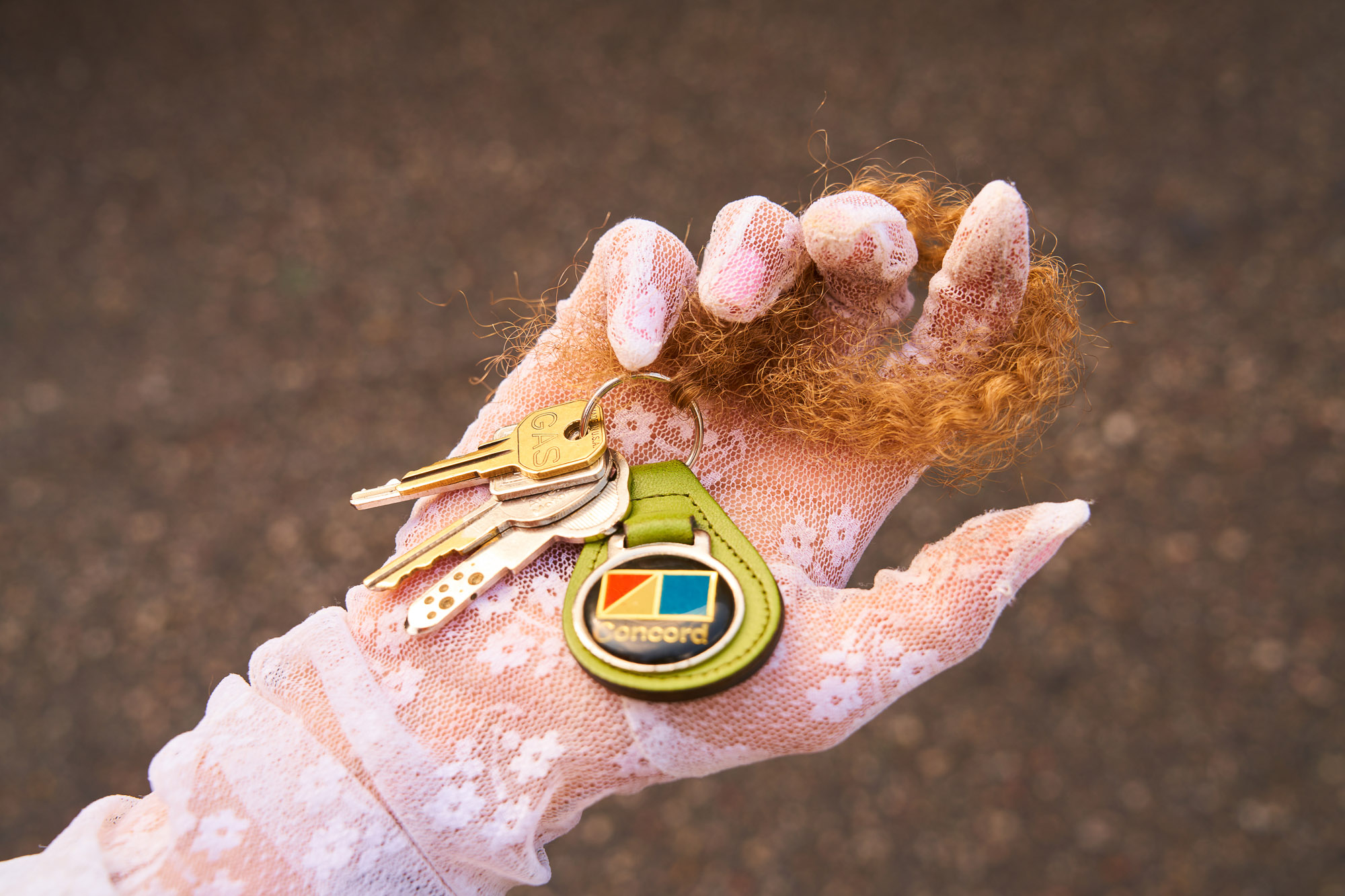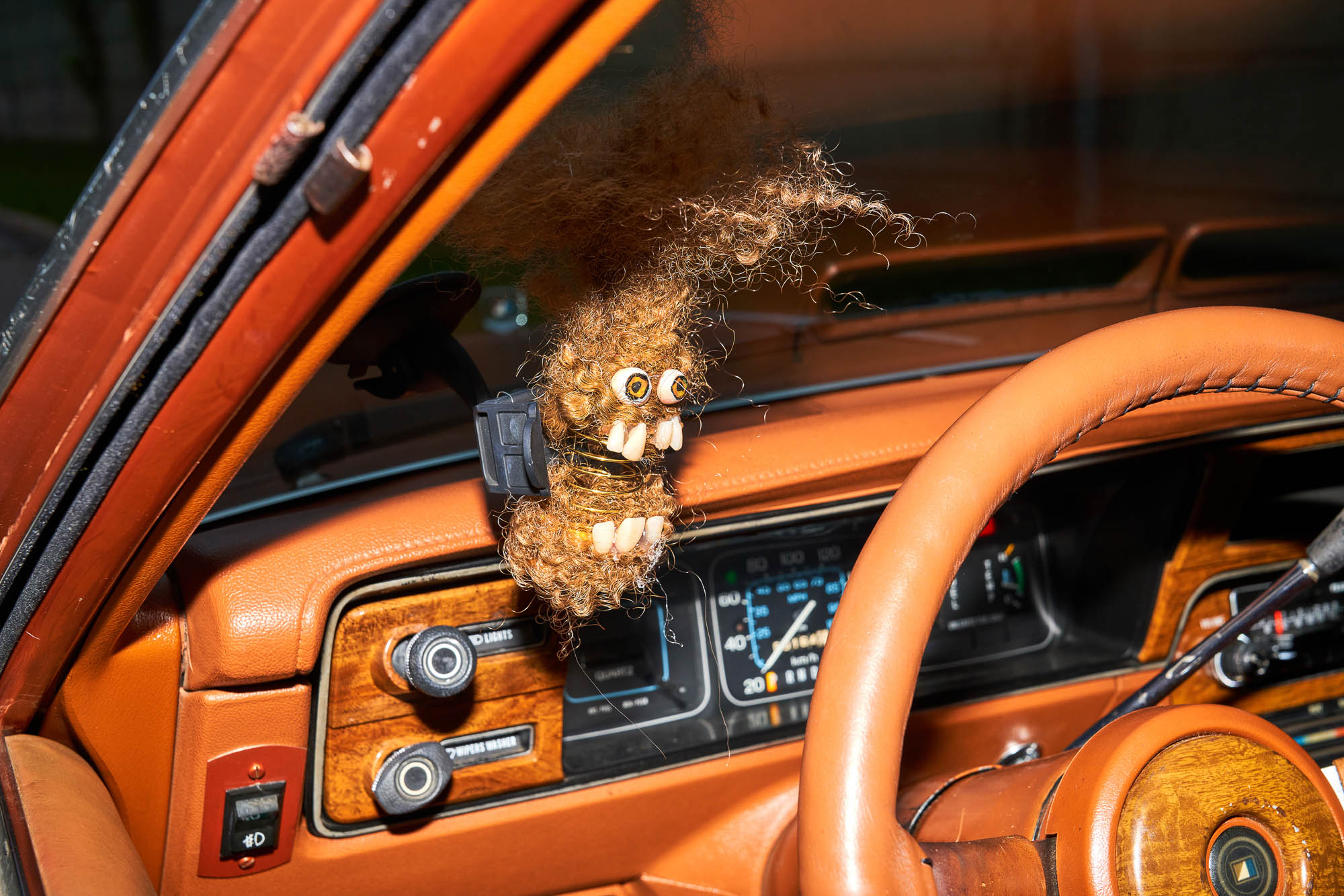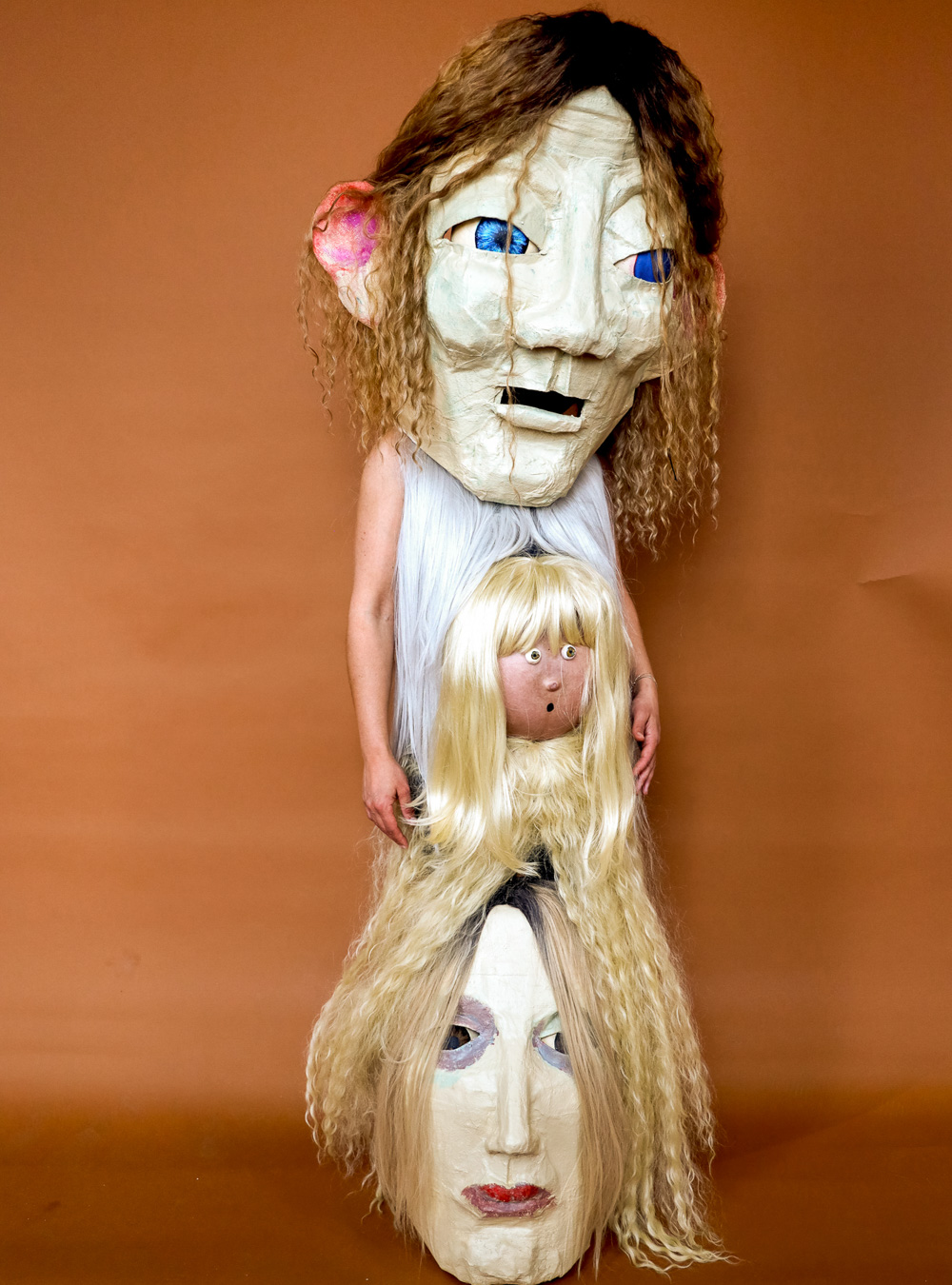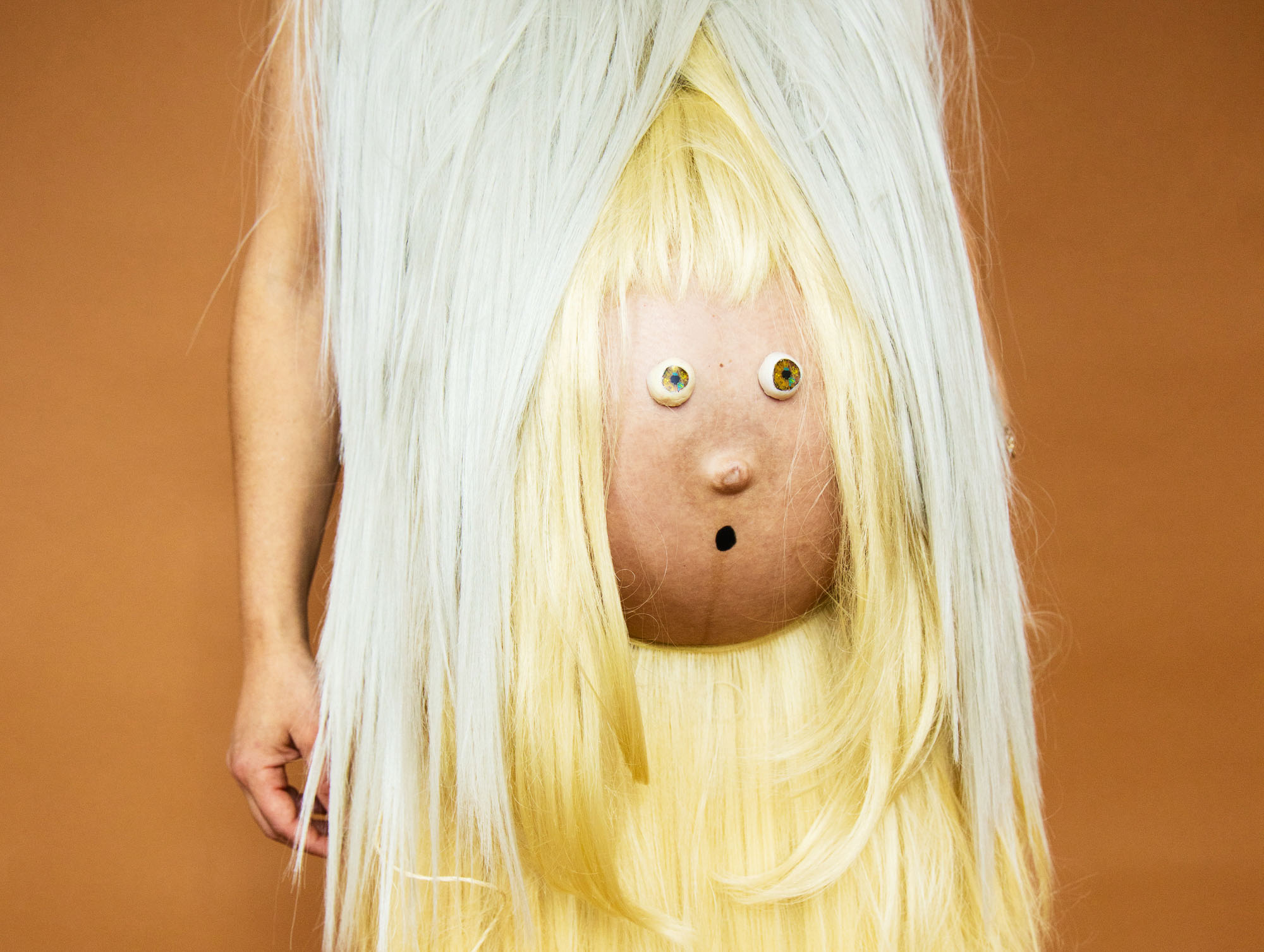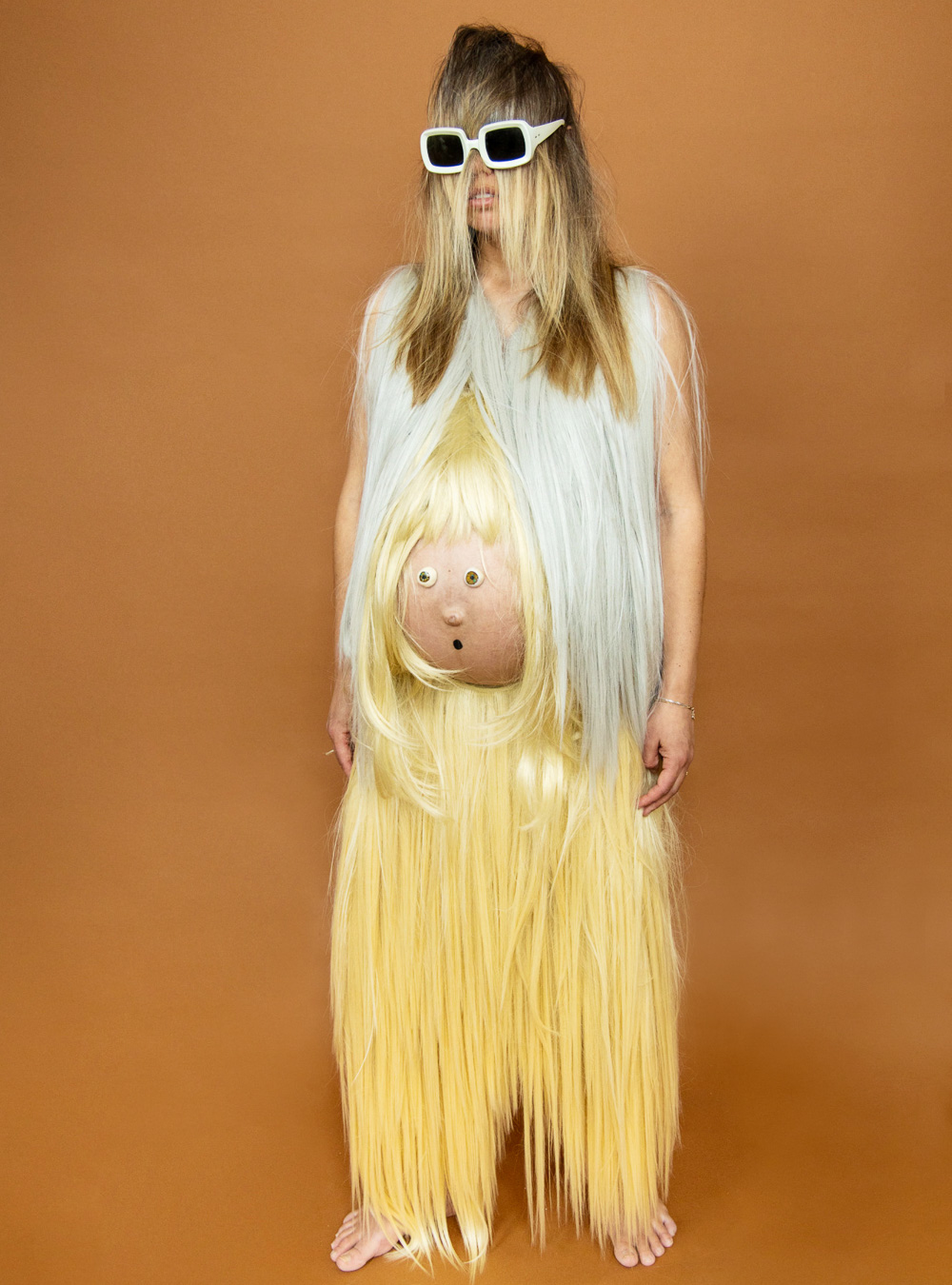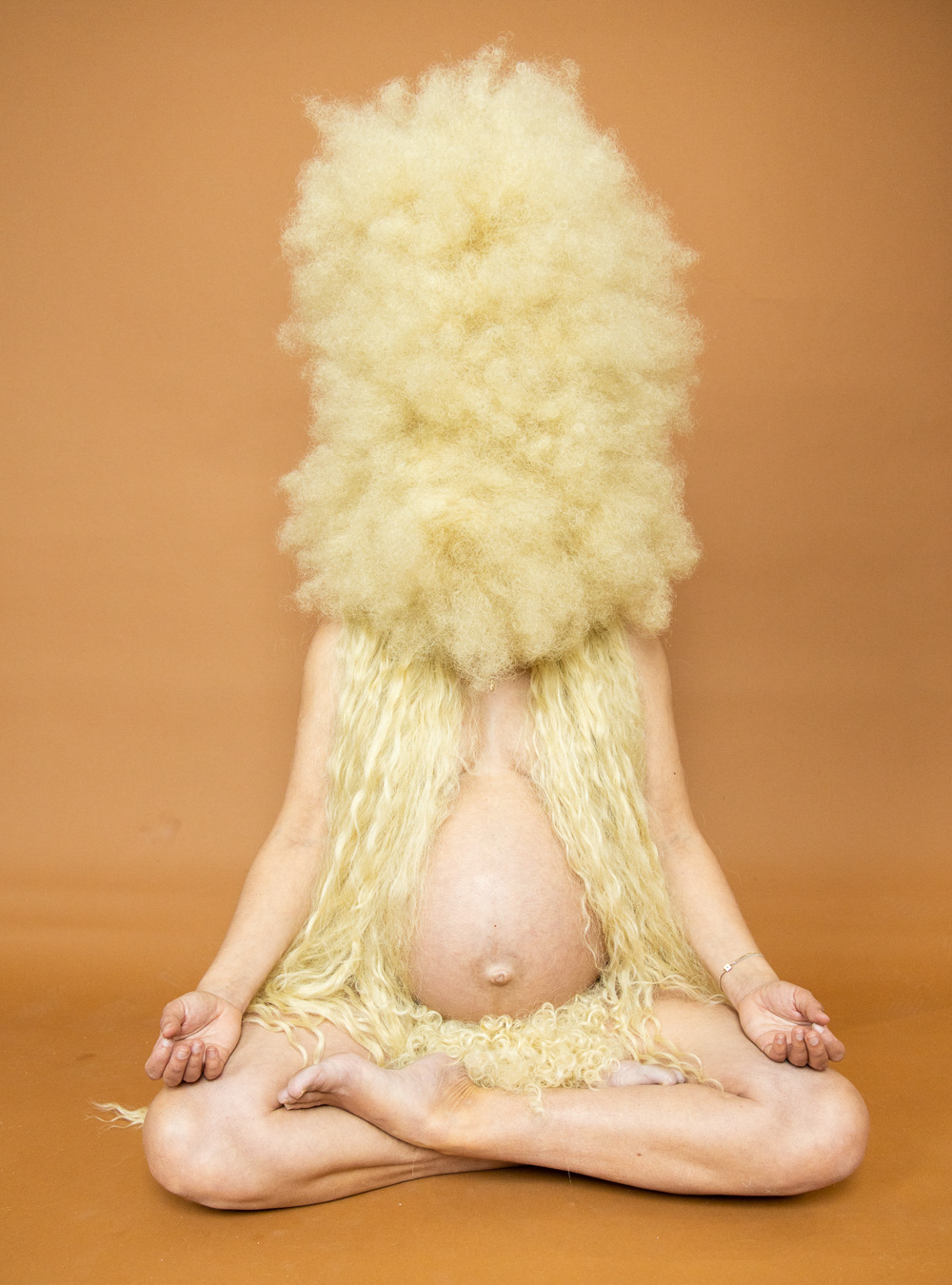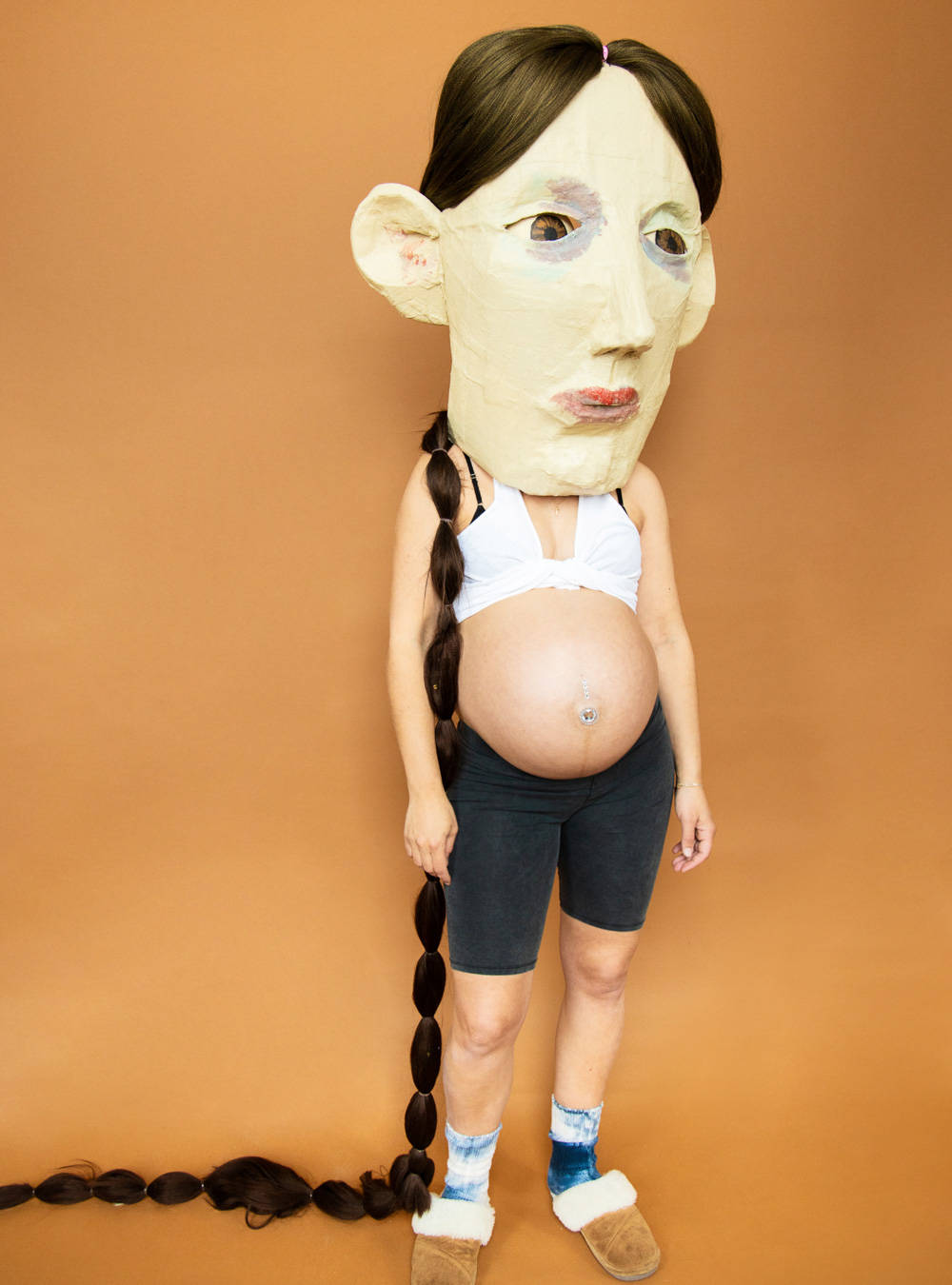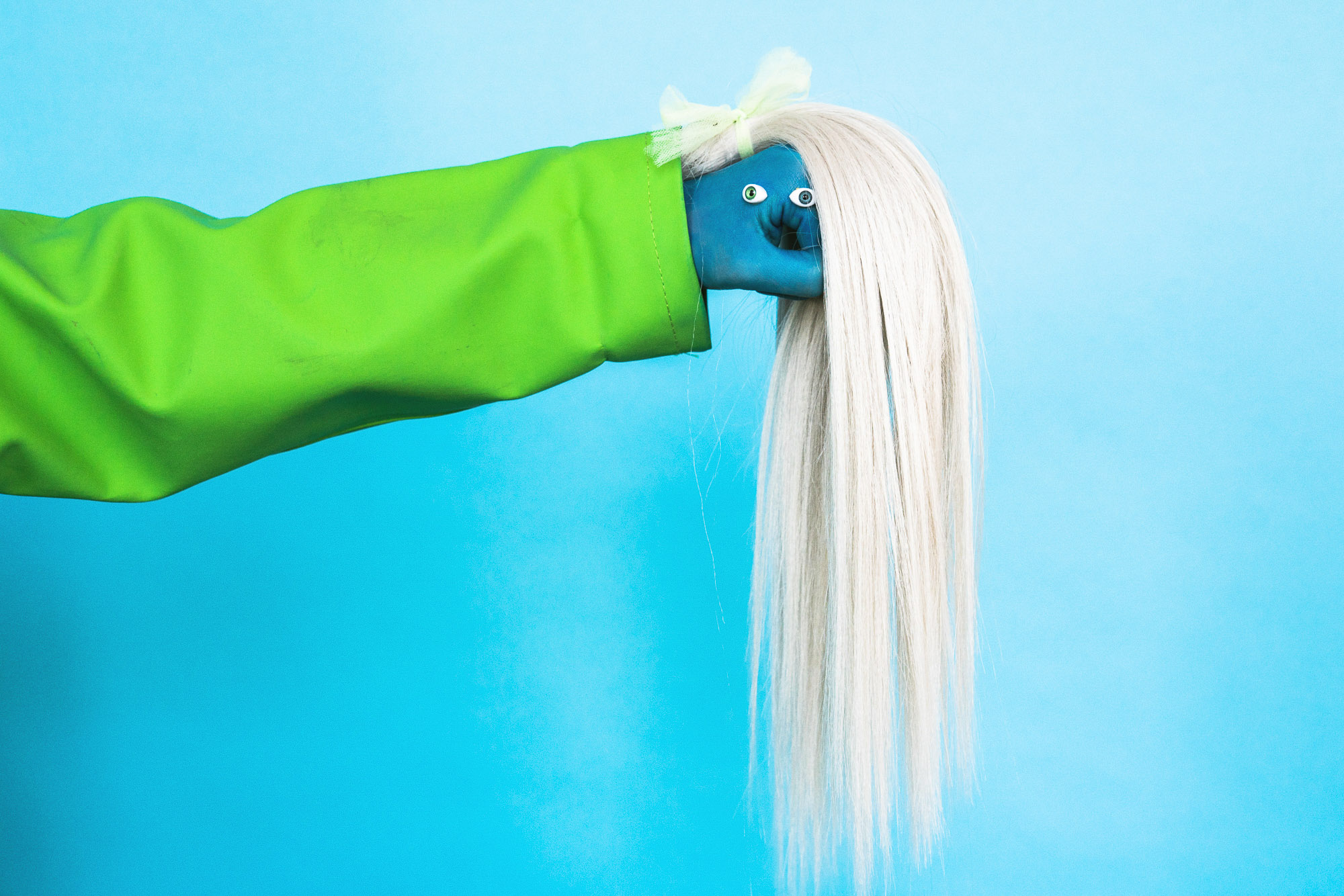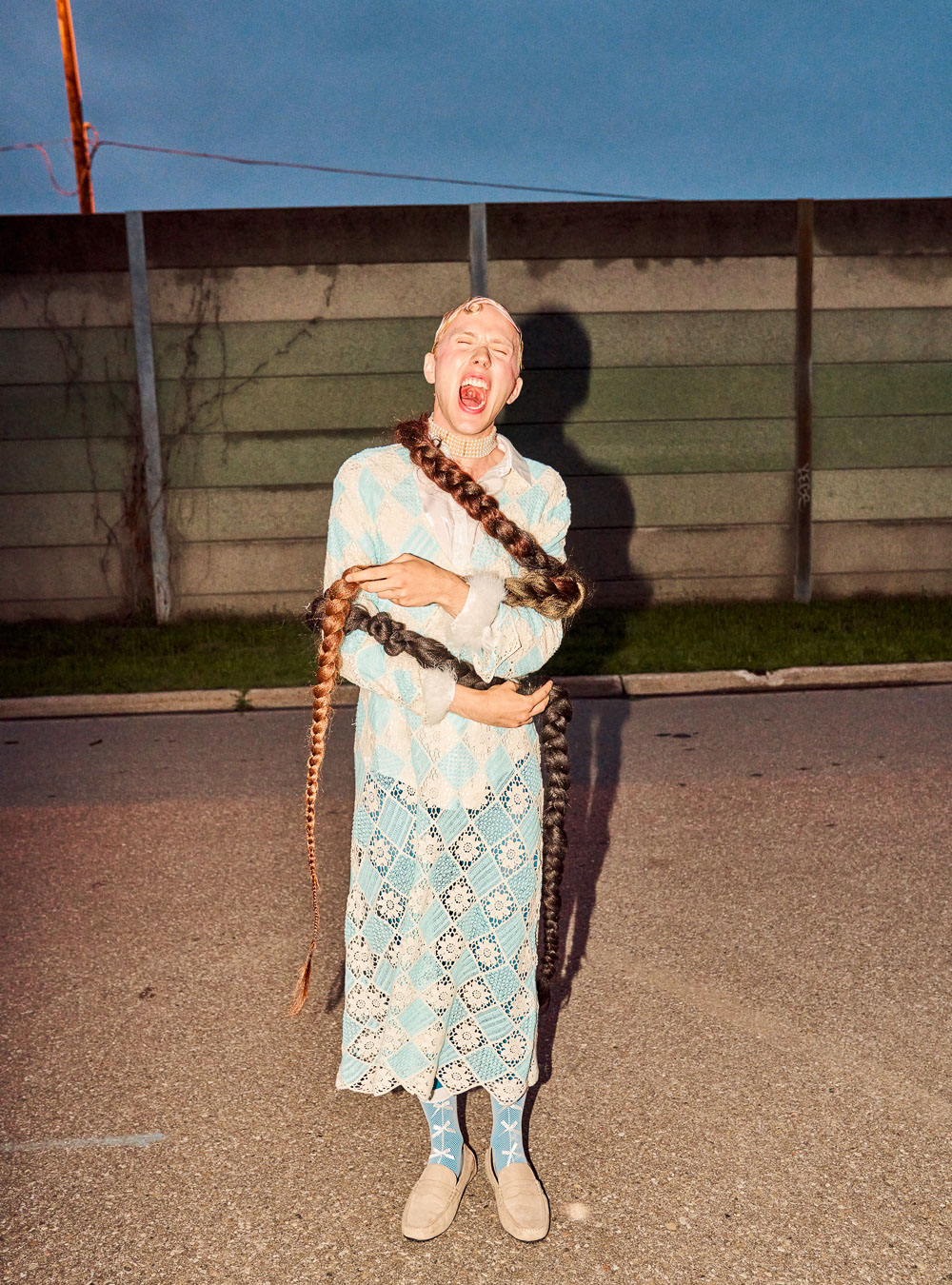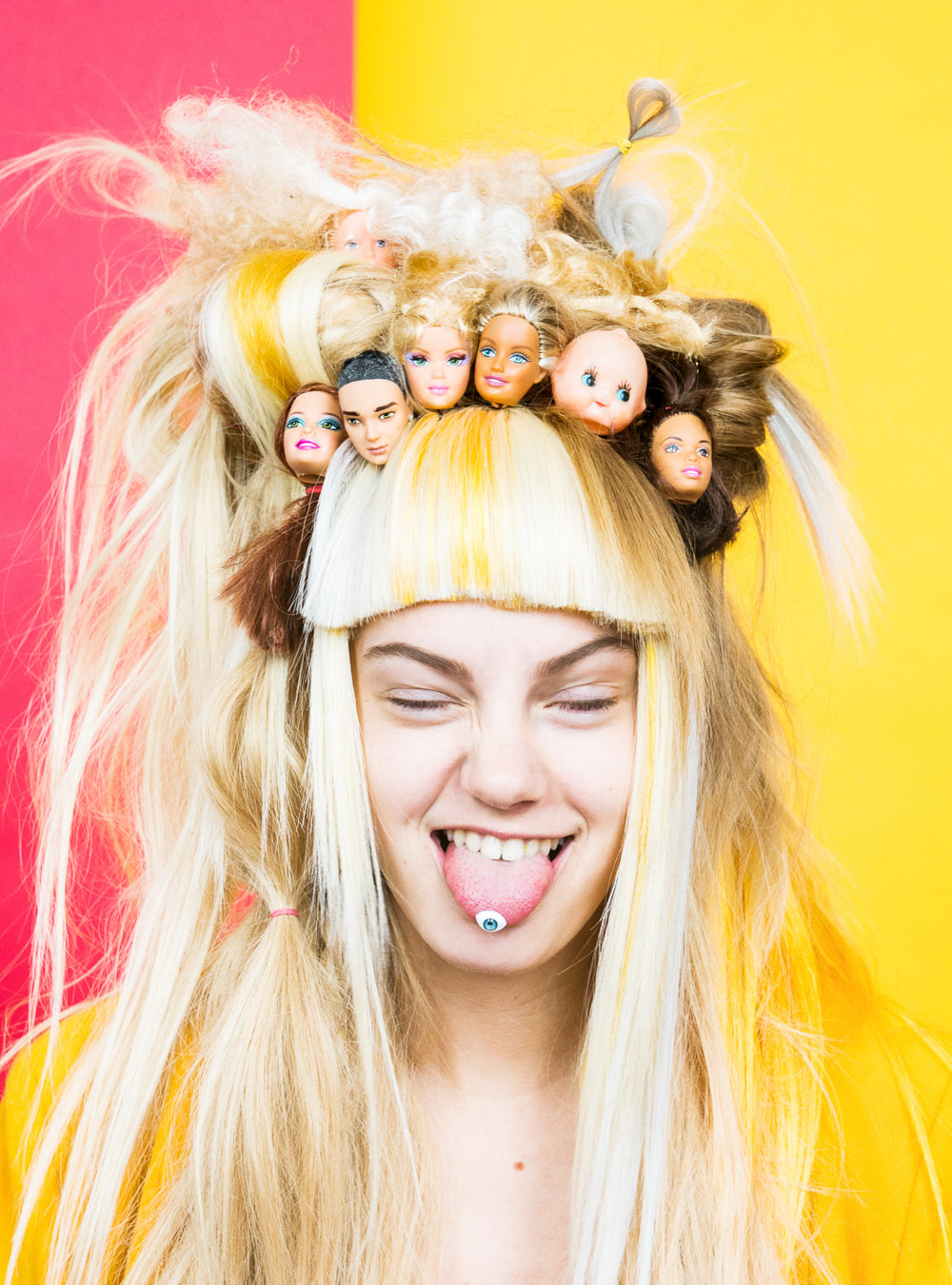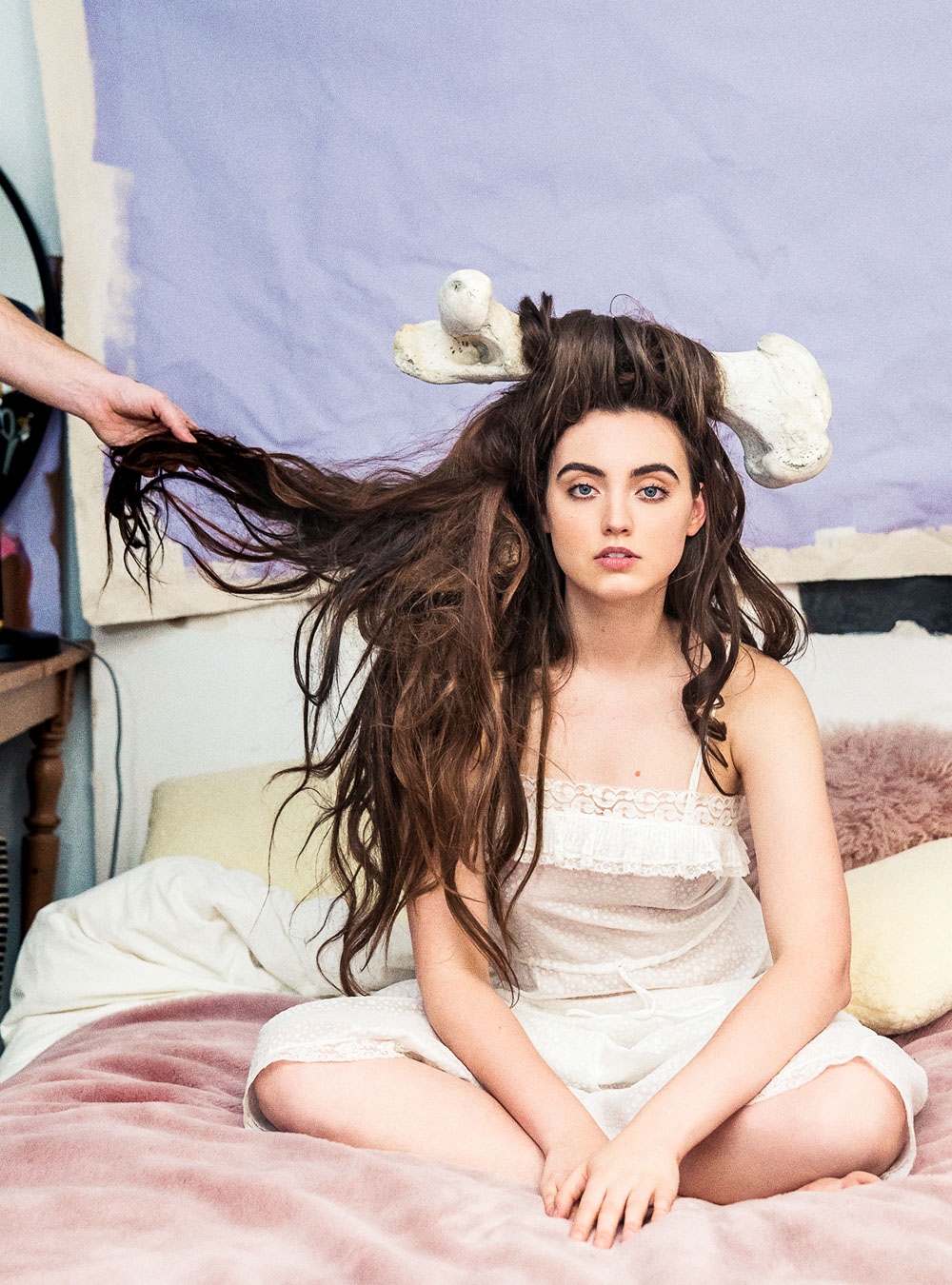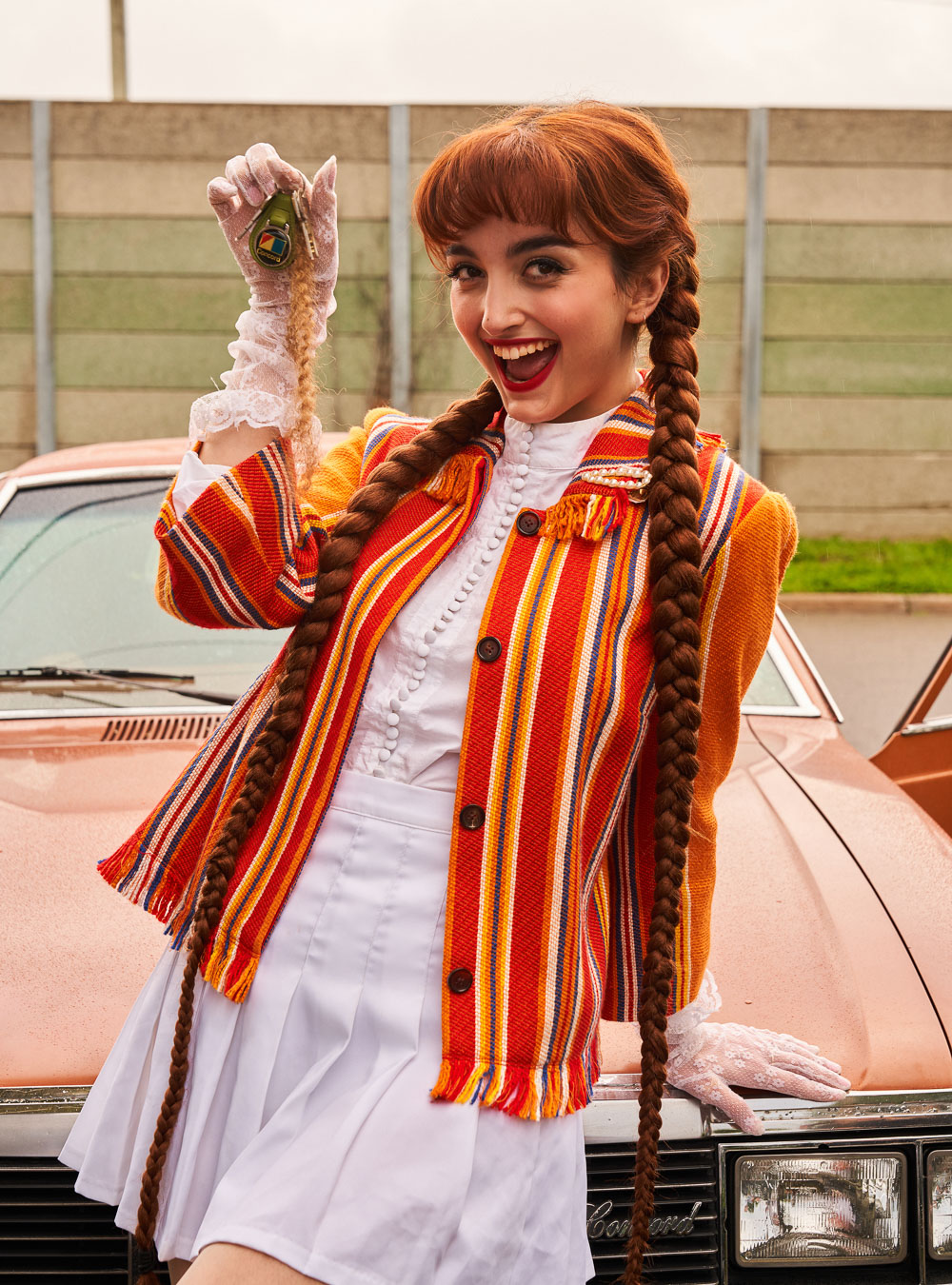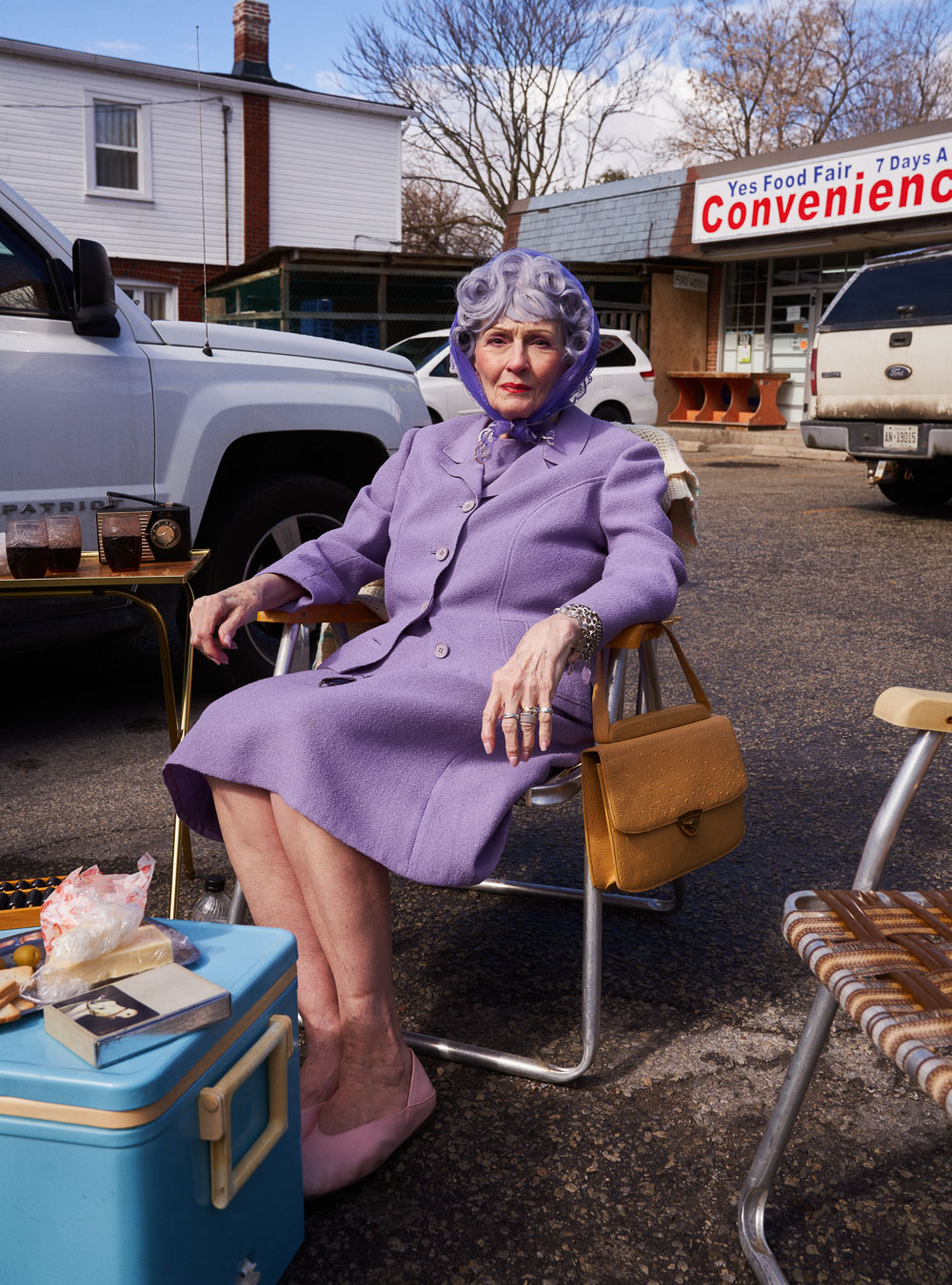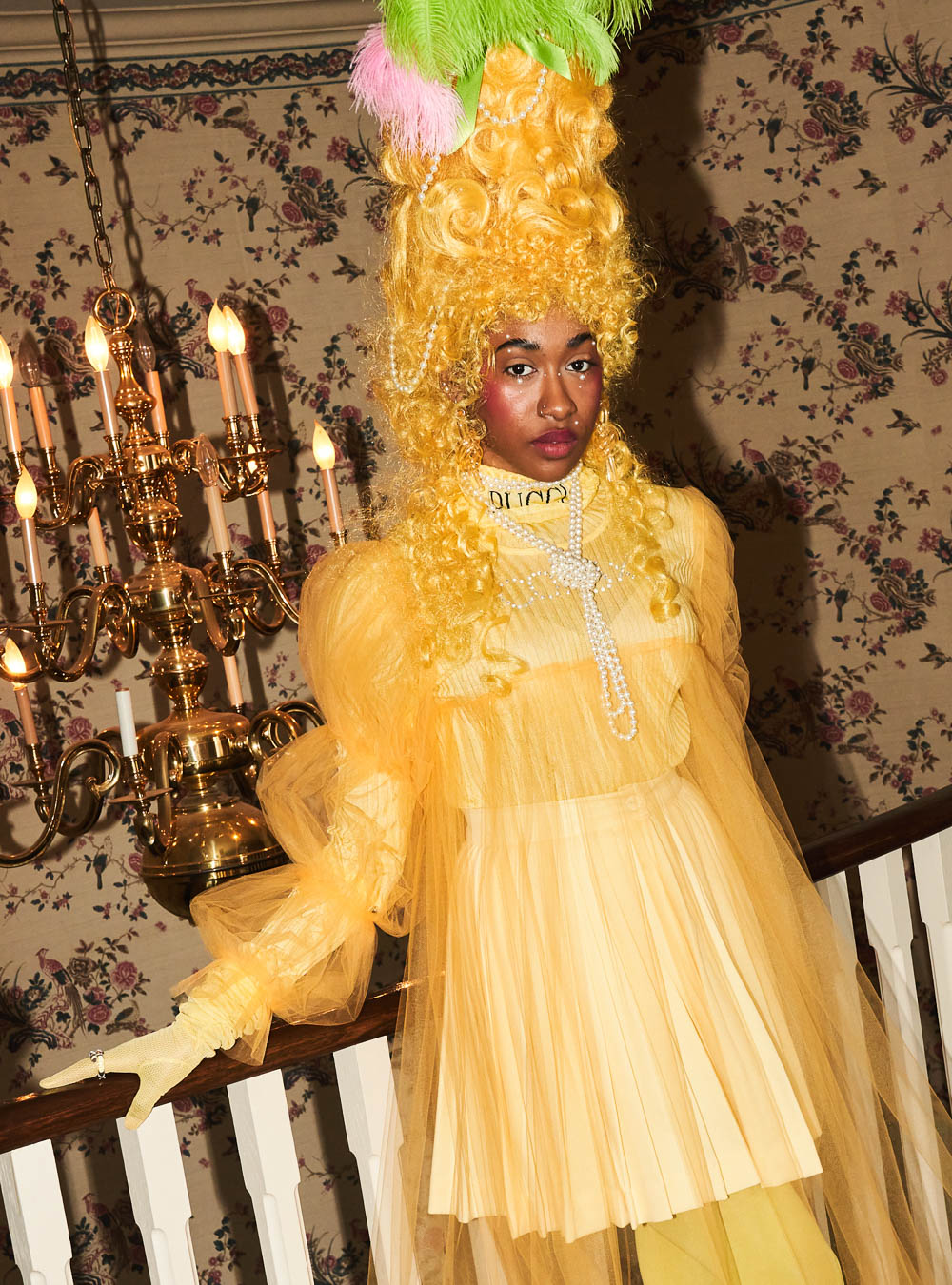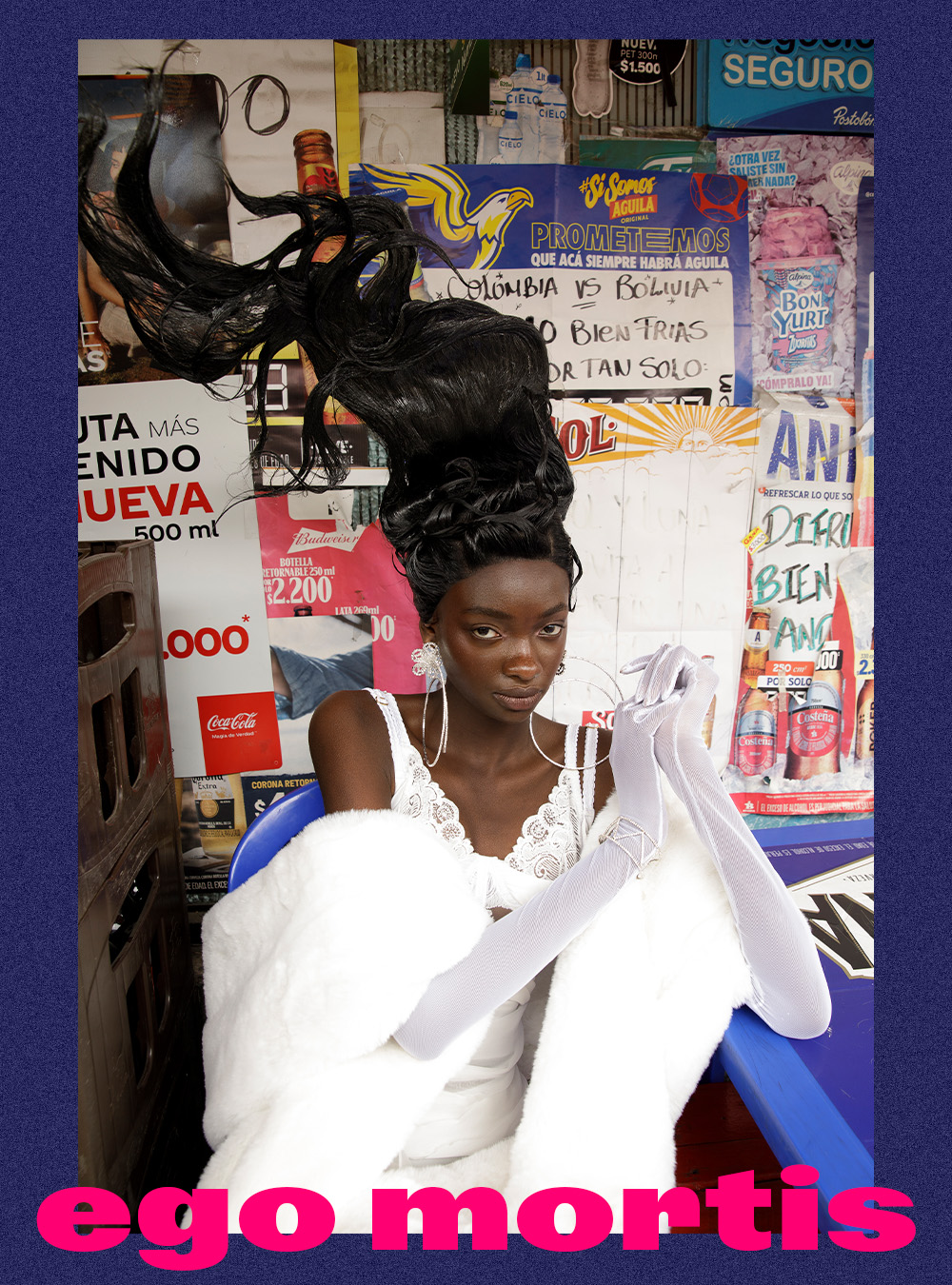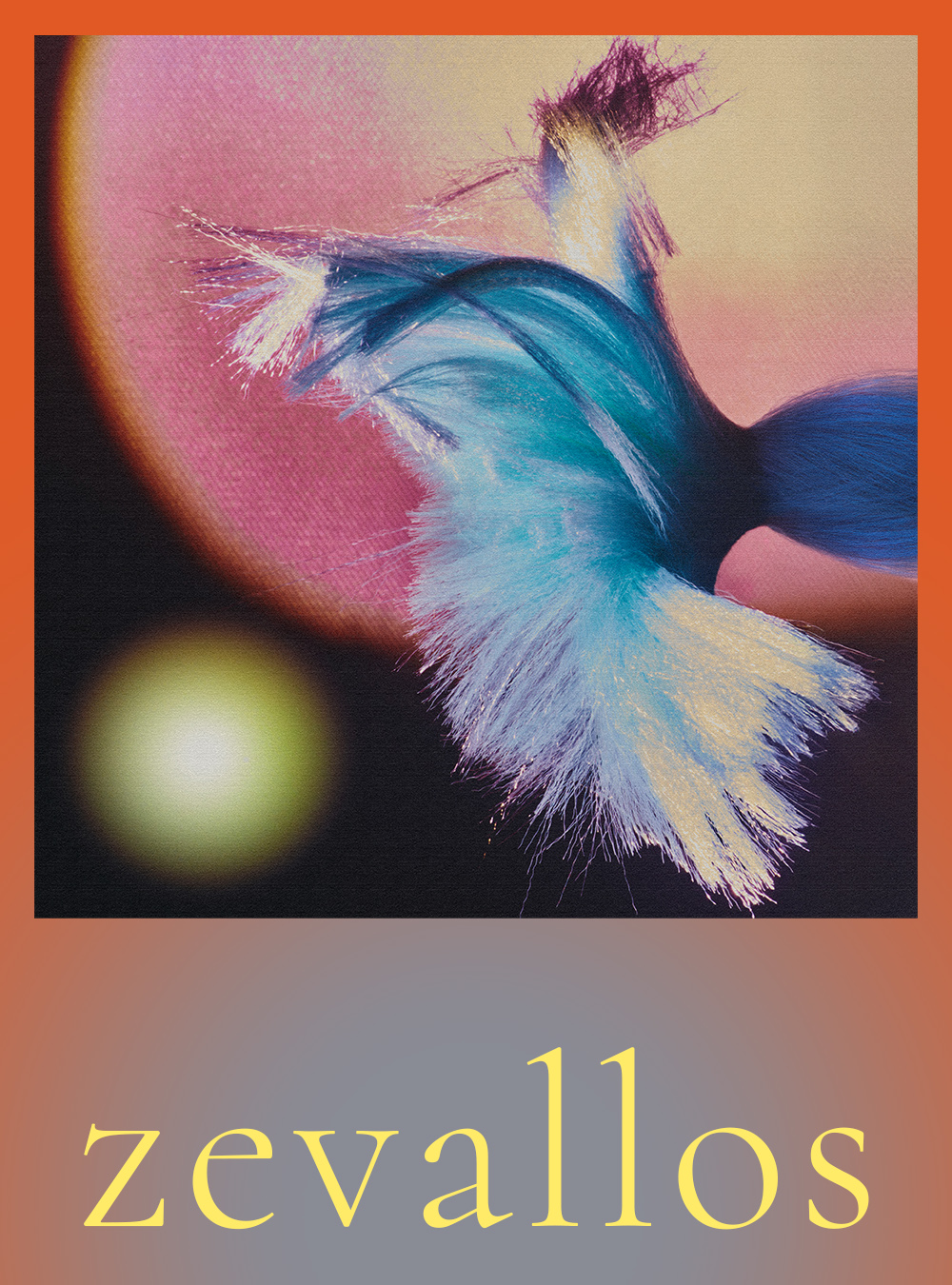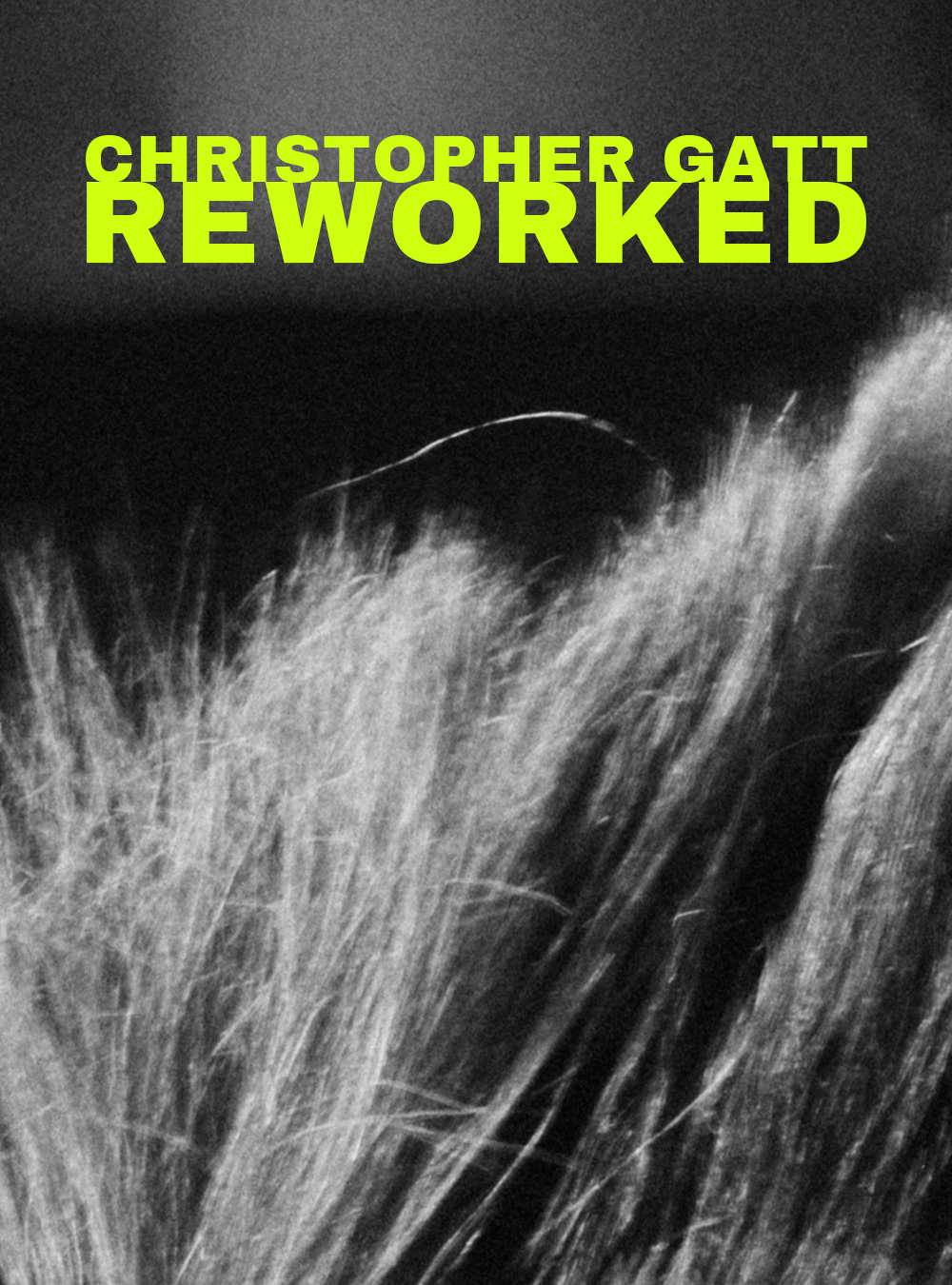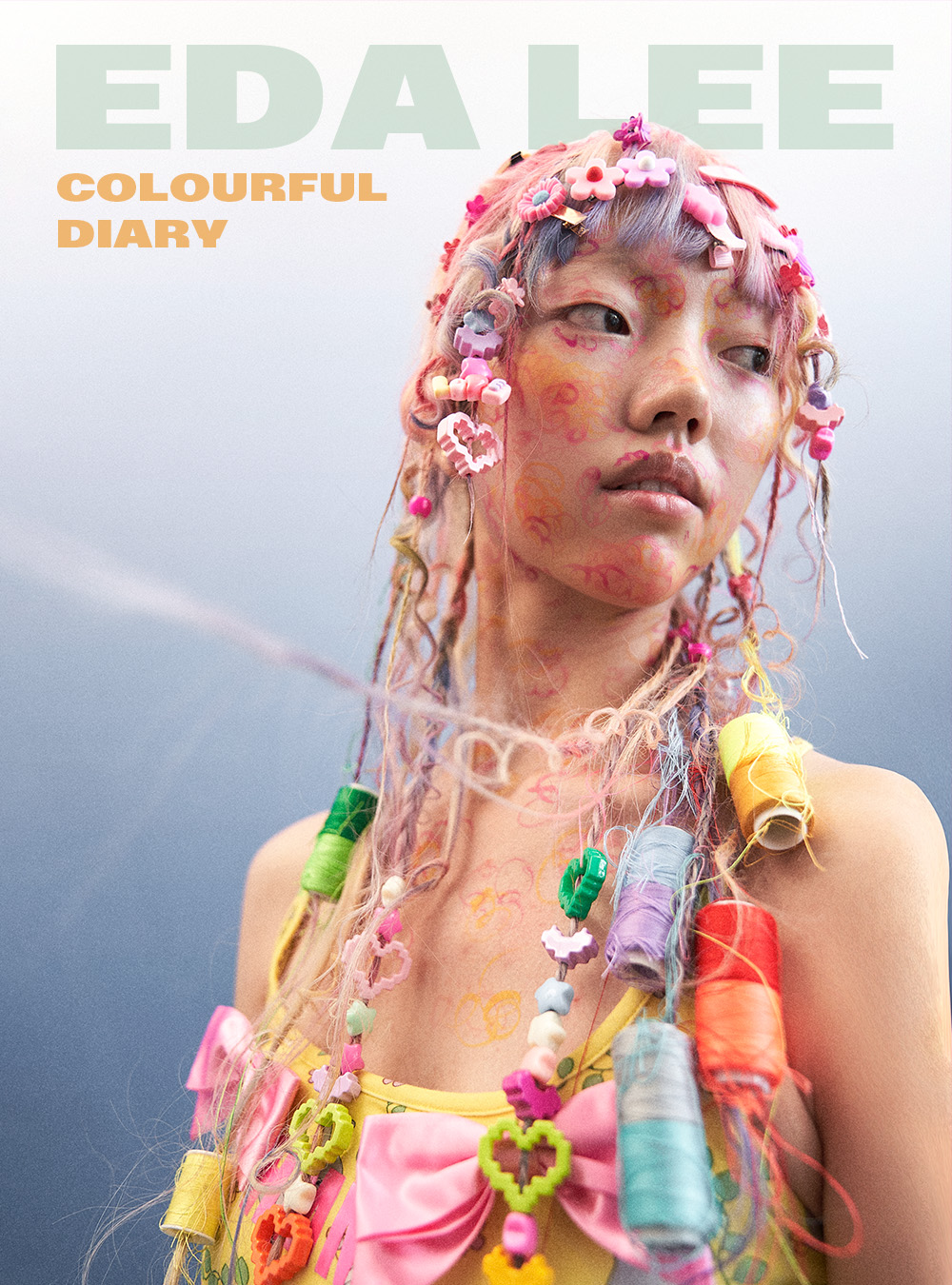ART + CULTURE: Renée Rodenkirchen and Justin Rousseau discuss their collaborative practice, borne of hair, play, and the human body
Interview: Hasadri Freeman
Artists: Renée Rodenkirchen + Justin Rousseau
Images courtesy of the artists
Renée Rodenkirchen and Justin Rousseau’s unique collaborative projects stem from a refreshing absence of self-importance. “Neither of us take ourselves too seriously,” says Renée, photographer, director, and half of the Toronto-based duo. Playfulness is certainly at home in the worlds dreamed up by the team, resulting in quirky visual output like “Hairball,” a short film about a car that eats its passengers, or “Hair Monsters,” a photo series of forgotten hairy creatures living in our homes. Openness is key: Justin emphasises, “we get to bring anything to the table, no matter how outlandish.” The pair lean into the childlike, sometimes silly process of discovering the creativity within and without one’s own body, resulting in joyous, textured, hairy-tales for a modern era.
Where did each of your interests in hair develop?
Justin Rousseau: My interest in hair developed at a really young age. To me, it was a symbol of femininity, and I was always drawn to people with long hair. As a young boy I would wear a striped t-shirt on my head and called it my “long-long hair.” I pretty much lived in it. To me, hair was the only thing that separated the genders: boys had short hair and girls had long hair, and I hated my short haircut. Later I would turn anything into hair: the tassels on my mother’s curtains, a mop head, the fringe around the ottoman. My dissatisfaction with myself opened a world of creativity to me.
Renée Rodenkirchen: My interest in hair started with film. When I was maybe around 7 or 8, I first watched Amadeusand I was so in awe of all the wigs, especially Wolfgang’s pink wig – it’s forever burned in my memory. Then there was also Hairspray – Amber and her mom’s hair was so good, and I loved Elvira’s hair, too. But, I didn’t start really experimenting with the use of hair in art until I met Justin. When I met Justin, I knew I’d found an amazing collaborator. We just get together to play and create. I highly recommend finding a friend like this!
How did you begin working with each other?
JR: Renée and I met through mutual friends who were also clients of mine. Pretty much the moment I met her I recognized a fellow weirdo. She is someone who just simply sees the world differently than others. When we hang out we get to bring anything to the table, no matter how outlandish, and I think we encourage each other to be as weird and as authentic as possible.
RR: We immediately had so many things to talk about. I’ve never met someone so on the same page as me creatively. Justin is hands down one of the coolest, most artistic, and open people I’ve ever met. How could you not be drawn to a person like that? Neither of us take ourselves too seriously and we both like to have a lot of fun with our art.
What emotions do you feel hair elicits in a viewer?
RR: So, Justin also owns a salon in addition to being an amazing artist. There’s hair everywhere… the collection of the hair in corners, that discarded, “gross” aspect became appealing to us. ‘Hair Monsters’ was born from those forgotten clumps of dust, debris and hair that gets forgotten about. They’re kind of gross, but also these sculpted artsy toys. I think what we’re trying to do with the hair in our work is get viewers to revert back to a childlike playfulness, and also maybe get a bit grossed out. A lot of our work, is about giving things a new, more imaginative life.
What leads you to mix textures like, for example, the vintage Concord in ‘Hairball’ and the many types of hair featured in the short?
JR: For ‘Hairball’ it was really the car that dictated what hair we used. We wanted the car to become this creature, and thus oranges, reds, and browns of the concord that made it so unique made us use the similar tones in the hair colour, and find as many textures in those colours to bring it to life. I wanted the monochromatic aspect of the hair to almost make you question if it had been there the entire time.
What is the backstory of ‘Pregnancy Hair?’ What led you to bring these two concepts together, and why do you feel it’s important to incorporate relatively unvisaged bodies/forms that are (rightly or not) sites of controversy?
JR: Renée was pregnant with her son Oscar we wanted to capture that moment but in the true spirit of Renée, we couldn’t do just a typical portrait—we thought, we have this amazing belly, how can we create a character with it? It has been a theme throughout our collaborations that we simply aren’t for everybody, which allows us to just tap into what we are drawn to rather than being overly concerned with controversy or social norms.
RR: ‘Pregnancy Hair’ was about poking fun of this very normal and often contrived idea of the pregnancy photoshoot. We waited until I was weeks away from giving birth so that my belly really stuck out. Justin had been working on these amazing masks and had tons of hair at his studio, so we decided to basically play dress-up. This was supposed to be the antithesis of an Instagram pregnancy shoot. Ultimately, we use hair to explore themes of beauty and play with notions of “what should be.”
What is your approach as collaborators?
JR: As collaborators we really value being able to say anything. I personally feel really free to have lots of bad ideas. As we go we manipulate things until it feels right—it’s a pretty organic process, and very free. Usually we end up with something that’s pretty different than the original idea, something that we perhaps couldn’t have imagined at the start.
RR: Our approach is to get together and play. We make art together more for the process of creating rather than the final product. We usually start with a simple idea and then build on it, brainstorming and then testing things out. What I love about collaborating with Justin is that there are no judgments, no limits. Our work comes from a very authentic place as playful creators. I think we often gravitate to things that have some humour, that don’t take themselves too seriously, even if the underlying message can actually get pretty deep. We’re both very spiritual, and our conversations can get pretty esoteric. There’s a lot of spirit in our work, even if it’s silly.
- ANTHROPOLOGY OF HAIR
- ANTHROPOLOGY OF HAIR
- ANTHROPOLOGY OF HAIR
- ANTHROPOLOGY OF HAIR
- ANTHROPOLOGY OF HAIR
